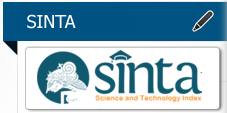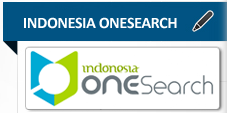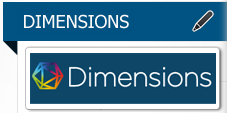PENCAPAIAN INDEKS KELUARGA SEHAT PROGRAM INDONESIA SEHAT PENDEKATAN KELUARGA (PIS – PK) : LITERATURE REVIEW
Abstract
Abstrak
Pembangunan kesehatan program utamanya adalah program Indonesia sehat yang pencapaiannya direncanakan melalui Rencana strategis Kementrian Kesehatan Tahun 2015-2019 yang ditetapkan melalui Kemenkes RI Nomor HK.02.02/Menkes/52/2015. Program Indonesia sehat adalah salah satu program agenda ke -5 Nawa Cita yaitu meningkatkan kualitas hidup manusia Indonesia. Indikator keluarga sehat antara lain: 1) keluarga mengikuti program Keluarga Berencana (KB), 2) ibu melakukan persalinan di fasilitas kesehatan, 3) bayi mendapat imunisasi dasar lengkap, 4) bayi mendapat air susu ibu (ASI) eksklusif, 5) balita mendapatkan pematauan pertumbuhan, 6) penderita tuberkulosis paru mendapatkan pengobatan sesuai standar, 7) penderita hipertensi melakukan pengobatan secara teratur, 8) penderita gangguan jiwa mendapatkan pengobatan dan tidak ditelantarkan, 9) anggota keluarga tidak ada yang merokok, 10) keluarga sudah menjadi anggota Jaminan Kesehatan Nasional (JKN), 11) keluarga mempunyai akses sarana air bersih, 12) keluarga mempunyai akses atau menggunakan jamban sehat.. Tujuan dari literature review ini adalah untuk mengetahui konsep, model atau teori yang efektif digunakan untuk mengeketahui gambaran indeks keluarga sehat di beberapa daerah Indonesia. Metode yang digunakan dengan cara melakukan pencarian beberapa studi yang diterbitkan melalui database Google Scholar. Studi yang dipilih diterbitkan dari tahun 2017-2021. Setelah dilakukan pencarian artikel dengan kata kunci tersebut maka total artikel yang di review dalam tinjauan literatur ini sebanyak 5 (lima) artikel. Berdasarkan hasil uji Univariat terhadap data penelitian menunjukan bahwa sebagian besar klasifikasi indeks keluarga sehat (IKS) terdapat pada status pra-sehat, yaitu di Desa Suguling 80%, di daerah terpencil di Kabupaten Sikka sebesar 52%, dan di Desa Nulle sebesar 56.49%.
Kata Kunci: Pencapaian, Program, Indonesia Sehat
Abstract
The main health development program is the Healthy Indonesia program, the achievement of which is planned through the Ministry of Health's Strategic Plan for 2015-2019 which is stipulated by the Indonesian Ministry of Health Number HK.02.02 / Menkes / 52/2015. The Healthy Indonesia Program is one of Nawa Cita's 5 years programs agenda, namely improving the quality of life of Indonesian people. Healthy family indicators include: 1) the family follows the Family Planning program, 2) the mother gives birth at a health facility, 3) the baby gets complete basic immunization, 4) the baby gets exclusive breast breastfeeding, 5) the toddler gets monitoring growth, 6) patients with pulmonary tuberculosis receive treatment according to standards, 7) patients with hypertension receive regular treatment, 8) people with mental disorders receive treatment and are not neglected, 9) family members do not smoke, 10) the family is a member of the Health Insurance National, 11) families have access to clean water facilities, 12) families have access or use healthy latrines. The purpose of this literature review is to find out concepts, models or theories that are effectively used to determine the description of the index of healthy families in several areas. Indonesia. The method used is by searching for several published studies through the Google Scholar database. Selected studies were published from 2017-2021. After searching for articles with these keywords, the total number of articles reviewed in this literature review was 5 (five) articles. Based on the results of the Univariate test on research data, it shows that most of the classifications of healthy family index are in pre-healthy status, namely in Suguling Village 80%, in remote areas in Sikka Regency at 52%, and in Nulle Village at 56.49%.
Keywords: Attainment, Program, Healthy Indonesian
Full Text:
PDFReferences
Angwenyi, V. et al. (2021) ‘An evaluation of self-management outcomes among chronic care patients in community home-based care programmes in rural Malawi: A 12-month follow-up study’, Health and Social Care in the Community, 29(2), pp. 353–368. doi: 10.1111/hsc.13094.
Betan, Y. and Wawo, M. A. B. (2019) ‘Gambaran Indeks Keluarga Sehat Di Daerah Terpencil Kabupaten Sikka, Nusa Tenggara Timur’, Chmk Nursing Scientific Journal, 3(September), pp. 121–125.
Boratas, S. and Kilic, H. F. (2018) ‘Evaluation of medication adherence in hypertensive patients and influential factors’, Pakistan Journal of Medical Sciences, 34(4), pp. 959–963. doi: 10.12669/pjms.344.14994.
DPR RI (2004) UNDANG-UNDANG REPUBLIK INDONESIA NOMOR 40 TAHUN 2004 TENTANG, Jakarta. Available at: http://eprints.uanl.mx/5481/1/1020149995.PDF.
Ermalena (2017) INDIKATOR KESEHATAN SDGs DI INDONESIA Dra., Acta Mathematica Academiae Scientiarum Hungaricae. doi: 10.1007/BF01886316.
Fikriana, R. et al. (2019) ‘Factor analysis of patient with hypertension on self-regulation based on self-belief’, Journal of Global Pharma Technology, 11(8), pp. 173–182.
Iseselo, M. K. and Ambikile, J. S. (2017) ‘Medication challenges for patients with severe mental illness: Experience and views of patients, caregivers and mental health care workers in Dar es Salaam, Tanzania’, International Journal of Mental Health Systems, 11(1), pp. 1–13. doi: 10.1186/s13033-017-0126-6.
Kemenkes (2016) ‘Peraturan Menteri Kesehatan Republik Indonesia Nomor 43 Tahun 2016’.
Kemenkes RI (2011a) ‘KEPMENKES RI Tentang Standar Antropometri Penilaian Status Gizi Anak’, Jornal de Pediatria, p. 41.
Kemenkes RI (2011b) Rencana Strategis Kementerian Kesehatan Tahun 2015-2019.
Kemenkes RI (2016) PERATURAN MENTERI KESEHATAN REPUBLIK INDONESIA NOMOR 39 TAHUN 2016. Jakarta.
Kemenkes RI (2019) Profil Kesehatan Indonesia Tahun 2019, Jakarta.
Maretalinia et al (2020) ‘Cakupan Keluarga Sehat Wilayah Perbatasan Indonesia-Malaysia’, 5(2), pp. 76–84.
Munawaroh, S. (2015) ‘Pola Asuh Mempengaruhi Status Gizi Balita’, Januari, 6(1), pp. 44–50. Available at: https://ejournal.umm.ac.id/index.php/keperawatan/article/view/2851.
Rahel, T. L. et al. (2018) ‘ANalisis MAsalah KEsehatan PEnduduk BErdasarkan 12 Indikator PIS-PK Rumah Susun Tambora’, 2(1), pp. 14–23.
Rakhmawati, N, Z, Panunggal, B. (2014). Hubungan Pengetahuan Dan Sikap Ibu Dengan Perilaku Pemberian Makanan Anak Usia 12-24 Bulan.Jurnal of Nutrition Collage Vol 3 No. 1 Tahun 2014. Diakses 28 Maret 2017
Rohimah, S. and Sastraprawira, T. (2019) ‘Pencapaian Indikator Keluarga Sehat Desa Saguling Kecamatan Baregbeg Kabupaten Ciamis’, Jurnal Keperawatan Galuh, 1(1), p. 57. doi: 10.25157/jkg.v1i1.1790.
Sahin HA SH. Reasons for not using family planning methods in Eastern Turkey. Eur J Contracept Reprod Heal Care. 8(1):11–6
Teli, M. and Selasa, P. (2021) ‘The Achievement of 12 Healthy Family Indicators and Healthy Family Index In Nulle Village- East Nusa Tenggara ’, 08(02), pp. 1062–1072.
DOI: https://doi.org/10.26751/jikk.v12i2.980
Refbacks
- There are currently no refbacks.
Universitas Muhammadiyah Kudus - LPPM Universitas Muhammadiyah Kudus
Jl. Ganesha 1 Purwosari Kudus 59316
Tel/ Fax +62-291-437218 Email : [email protected]
Jurnal Ilmu Keperawatan dan Kebidanan Indexed by:

This work is licensed under a Creative Commons Attribution-ShareAlike 4.0 International License.













